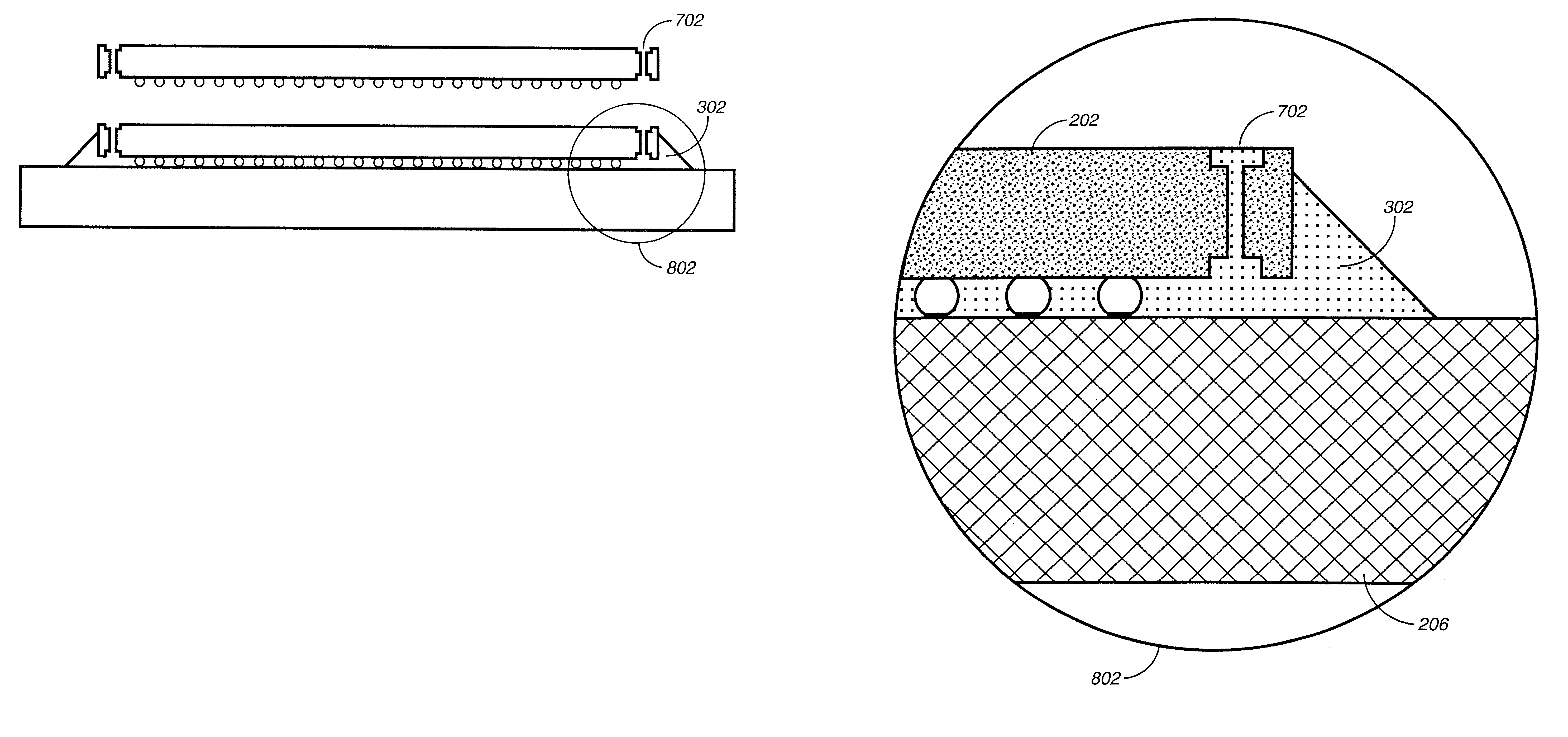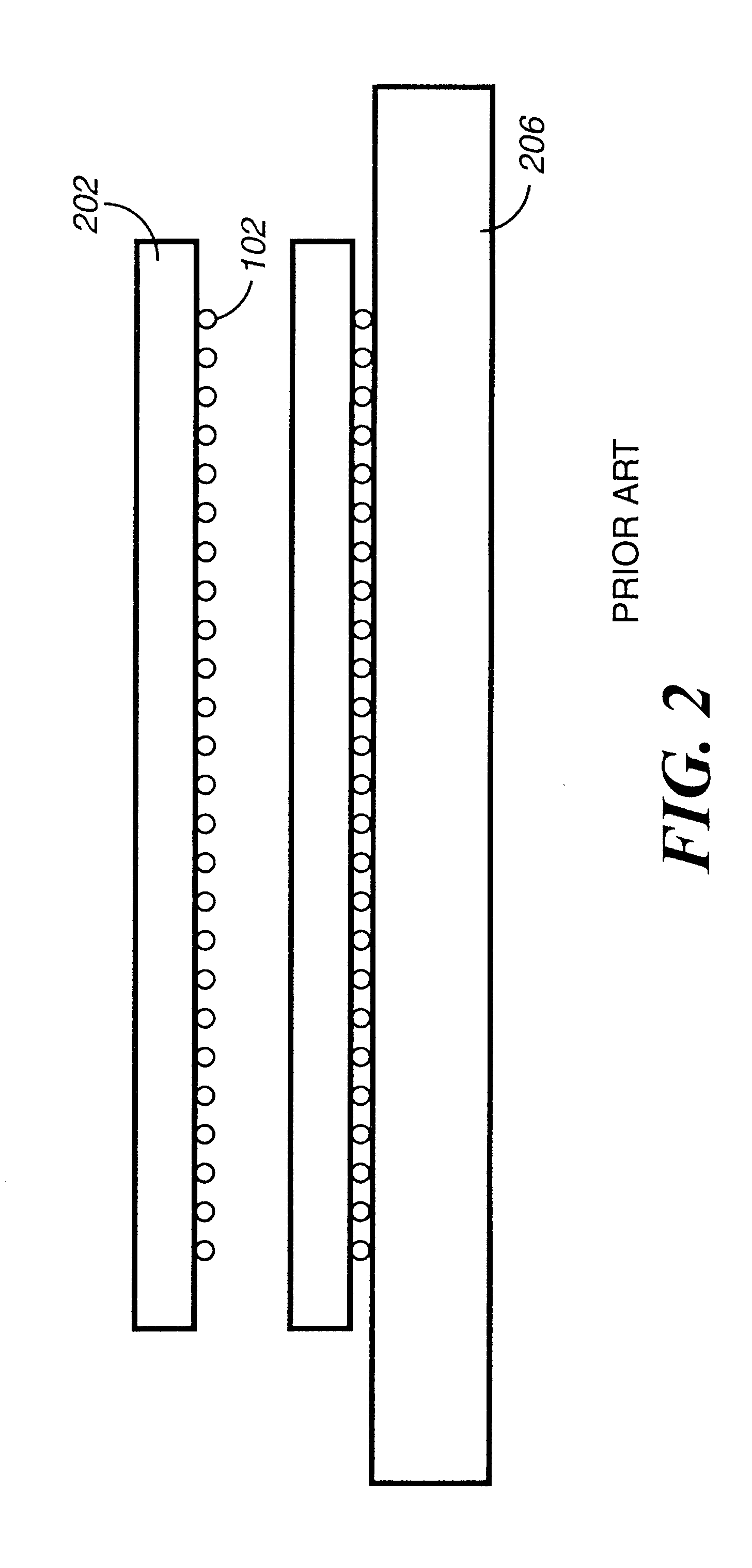Stress reduction for flip chip package
a flip chip and stress reduction technology, applied in the field of integrated circuits, can solve the problems of exaggerated device size, low stress, and weak bonding of the soldering, and achieve the effect of reducing the stress of the soldering
- Summary
- Abstract
- Description
- Claims
- Application Information
AI Technical Summary
Benefits of technology
Problems solved by technology
Method used
Image
Examples
Embodiment Construction
The problems associated with current flip chip assemblies can be remedied, at least partially, by anchoring the IC to the underfill layer. FIG. 7 shows the IC surface 100 with a hole 702 in each corner. FIG. 8 shows a cross-sectional view of the holes 702 and highlights a circular area 802 that is exploded in FIG. 9. FIG. 9 shows the underfill layer 302 filling the hole 702, and thereby providing an anchor.
The hole 702 can be more generally referred to as an anchoring point. An anchoring point can have virtually any shape and size. The preferred embodiment, shown in FIGS. 7-9, employs a cylindrical region with a top view of a circle, in which the anchoring point operates like a rivet. The placement of the anchoring points in the corners is effective in providing strength because the stress is greatest at the corners, as explained earlier. Other embodiments could employ an anchoring point with a top view of a rectangle, of an L-shaped region in a corner, or of an arc placed in a corn...
PUM
 Login to View More
Login to View More Abstract
Description
Claims
Application Information
 Login to View More
Login to View More - R&D
- Intellectual Property
- Life Sciences
- Materials
- Tech Scout
- Unparalleled Data Quality
- Higher Quality Content
- 60% Fewer Hallucinations
Browse by: Latest US Patents, China's latest patents, Technical Efficacy Thesaurus, Application Domain, Technology Topic, Popular Technical Reports.
© 2025 PatSnap. All rights reserved.Legal|Privacy policy|Modern Slavery Act Transparency Statement|Sitemap|About US| Contact US: help@patsnap.com



